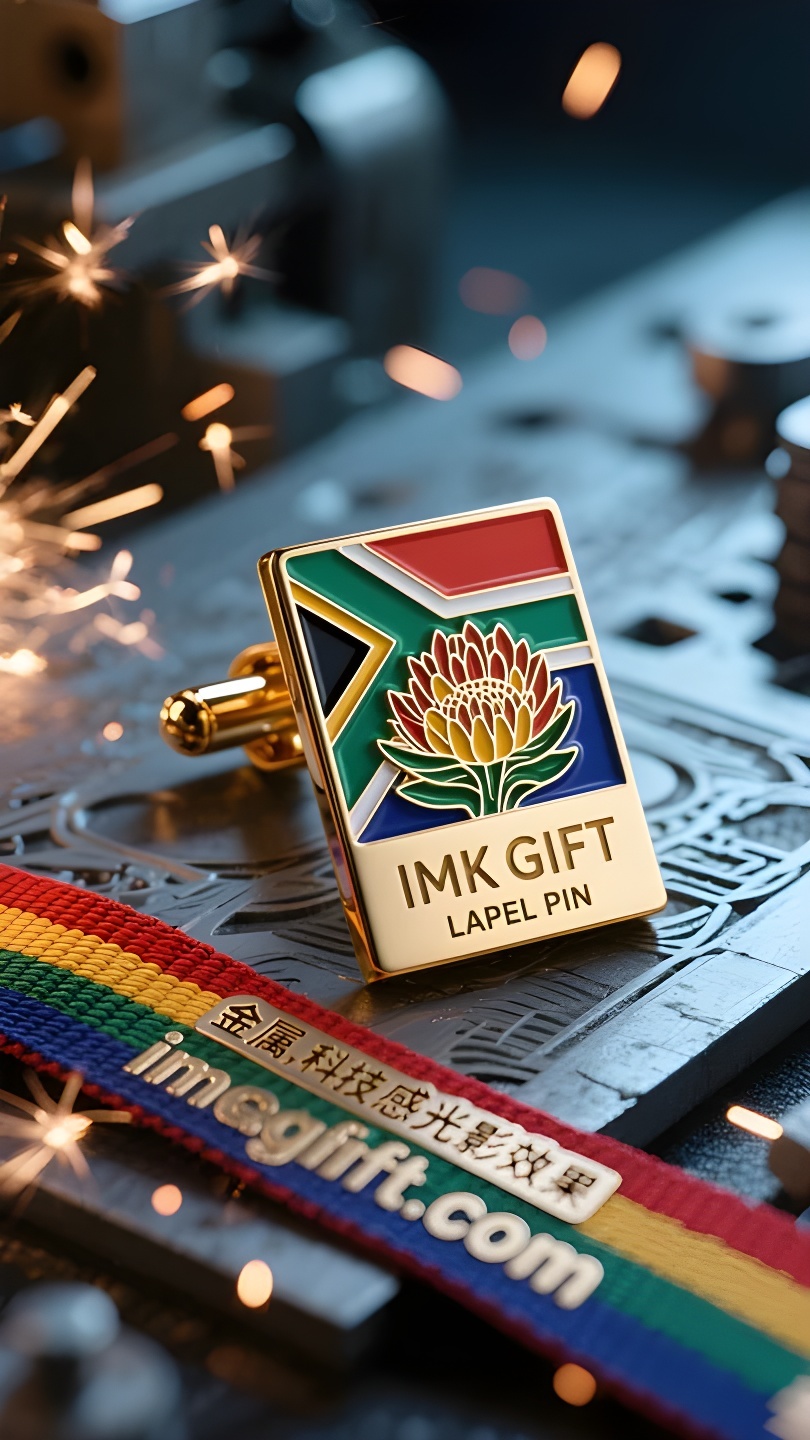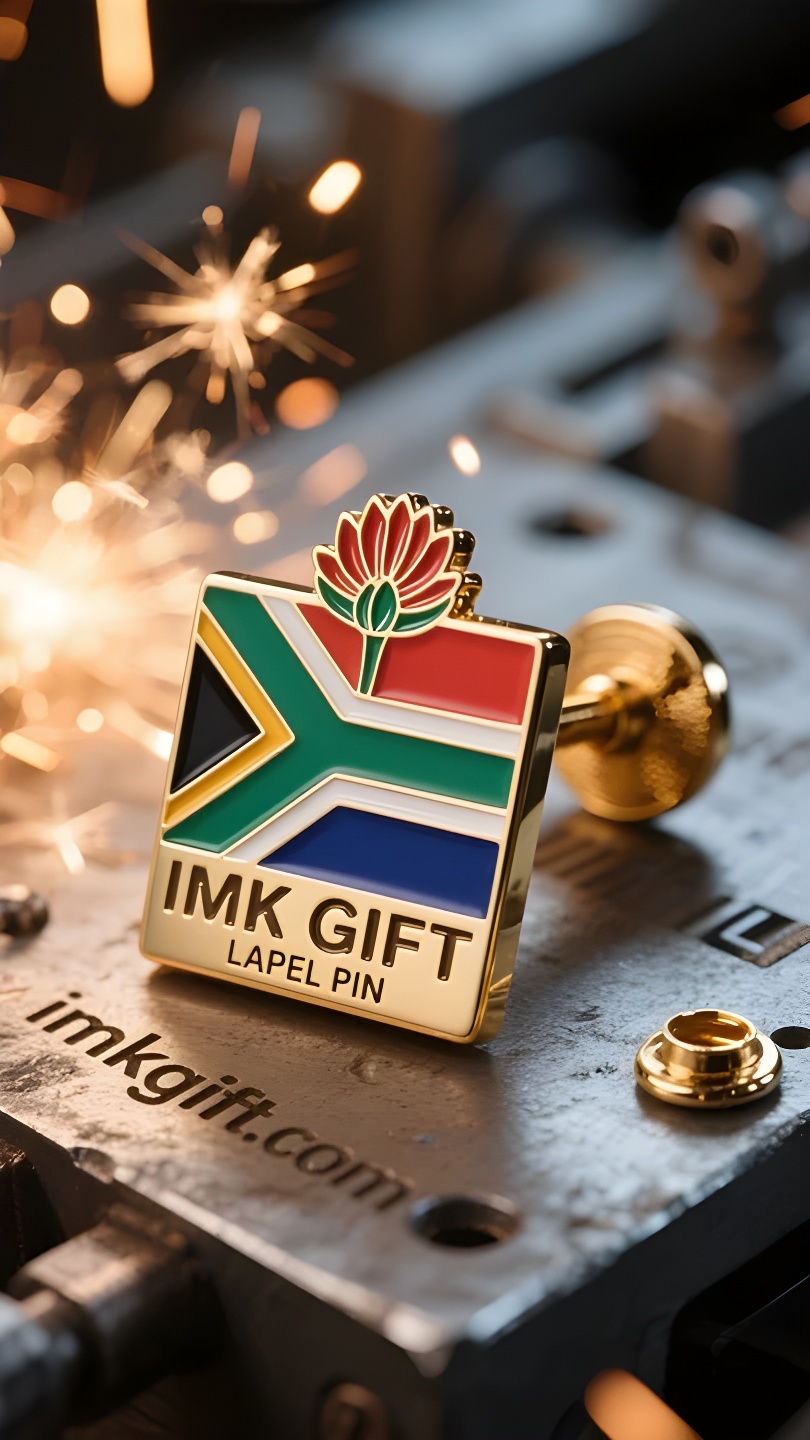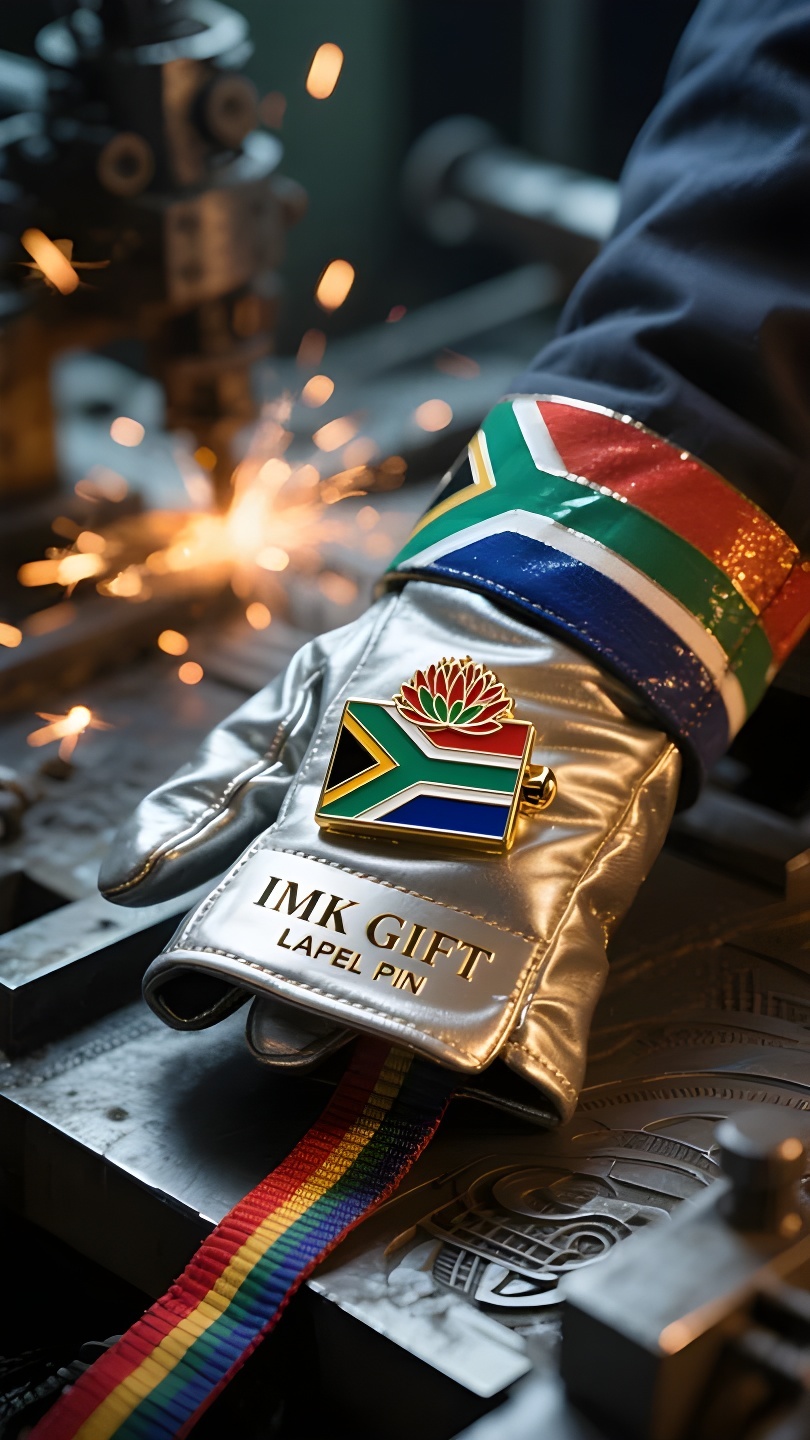in997-Protea-manchetknope-die-krag-van-die-reënboog-vasgespeld-op-jou-bors
▼
Elke April, tydens Suid-Afrika se Vryheidsdagvieringe, kan mense altyd protea-vormige manchetknope aan die rokke van politici sien, wat in die son flits. Hierdie goue bykomstigheid, wat elemente van die nasionale vlag insluit, dra nie net Suid-Afrika se mees hardnekkige lewenstotem nie, maar impliseer ook die geestelike kode van die “Reënboognasie” se wedergeboorte uit die as. Die koningprotea is die nasionale blom van Suid-Afrika. Sy nege silwer skutblare stem ooreen met die nege taalgroepe op die nasionale vlag, en sy houtagtige stingels simboliseer die onwrikbare nasionale karakter wat kolonisasie en apartheid oorleef het. Wanneer hierdie plant wat in dorre rotsskeure groei, in manchetknope gegiet word, word dit ‘n mobiele kenteken van geloof – wat die draer herinner aan die oorlewingswysheid van “deur rotse breek”, en ook die konstitusionele gees van “harmonieuse naasbestaan van verskillende etniese groepe” deur die oorvleuelende metaalblare interpreteer. Net soos die Suid-Afrikaanse vlag die estetika van ses kleure uit konflik gesmee het, demonstreer die driedimensionele struktuur van die Protea-manchetknope ook die pad na versoening: elke blaar roteer onafhanklik, maar deel ‘n gemeenskaplike as, net soos verskillende etniese groepe hul kulturele eienskappe handhaaf, maar saam ‘n land bou. Vandag word hierdie ornament wat eens aan die elite behoort het, gewild onder die algemene publiek. Jongmense dra dit om muurskilderye op die strate van Johannesburg te skep, en gebruik die weerkaatsing van metaal om die krag en vitaliteit van die nuwe Suid-Afrika te weerkaats. Wanneer die manchetknope in die hemp geplaas word, is dit nie net die versiering nie, maar ook die geskiedenis van stryd en hoop van die hele land word vasgepen op die plek naaste aan die hart. Hierdie klein goue teken is ‘n voortdurende herinnering: ware vryheid groei altyd in die grond wat verskille aanvaar.
Every April, during the South African Freedom Day celebrations, people can always see cufflinks in the shape of protea flowers on the dresses of politicians, flashing in the sun. This golden accessory, which incorporates elements of the national flag, not only carries the most tenacious life totem of South Africa, but also implies the spiritual code of the rebirth of this “rainbow country”. As the national flower of South Africa, the nine silver bracts of the protea flower correspond to the nine language groups on the national flag, and the woody stems symbolize the unyielding national character after colonization and apartheid. When this plant growing in barren rock cracks is cast into cufflinks, it becomes a mobile badge of faith – reminding the wearer of the survival wisdom of “breaking the rock”, and interpreting the constitutional spirit of “harmonious coexistence of different ethnic groups” through overlapping metal petals. Just as the South African flag has refined the aesthetics of six colors from conflict, the three-dimensional structure of the protea flower cufflinks also confirms the way of reconciliation: each petal rotates independently but shares the axis, just like each ethnic group maintains its cultural characteristics but builds a country together. Today, this ornament, which once belonged to the elite, is becoming popular among the general public. Young people wear it to create murals on the streets of Johannesburg, using the metal reflection to reflect the vigor and vitality of the new South Africa. When the cufflinks are inserted into the shirt, it is not only the completion of the decoration, but also the pinning of the history of struggle and hope of the entire country to the place closest to the heart. This small golden token always reminds us that true freedom always grows in the soil that accepts differences.
每年四月,南非自由日庆典期间,人们总能在政要礼服上看到帝王花造型的袖扣在阳光下闪烁。这枚融合国旗元素的金色配饰,不仅承载着南非最顽强的生命图腾,更暗含着这个”彩虹之国”浴火重生的精神密码。
帝王花作为南非国花,其九片银色苞叶对应国旗上的九种语言族群,木质化的茎秆象征着历经殖民与种族隔离仍不屈的国民风骨。当这种生长在贫瘠岩缝中的植物被铸成袖扣,便成为移动的信念徽章——既提醒佩戴者”破岩而生”的生存智慧,也通过交叠的金属花瓣演绎”不同族群和谐共生”的宪法精神。
正如南非国旗从冲突中淬炼出六色交融的美学,帝王花袖扣的立体结构同样印证着和解之道:每枚花瓣独立旋转却共享轴心,恰似各族群保持文化特性却共筑国家。如今,这种曾属于精英阶层的饰物正走入民间,青年们戴着它在约翰内斯堡的街头创作壁画,用金属反光折射出新南非的蓬勃朝气。
当袖扣卡入衬衫的瞬间,不仅是装饰的完成,更是将整个国家的抗争史与希望别在了离心脏最近的位置。这枚小小的金色信物,始终提醒着:真正的自由,永远生长在接纳差异的土壤里。
▼
Contact Us
📞 Tel: +0086-760-85286839
📧 Email: sales3@imkgift.com








